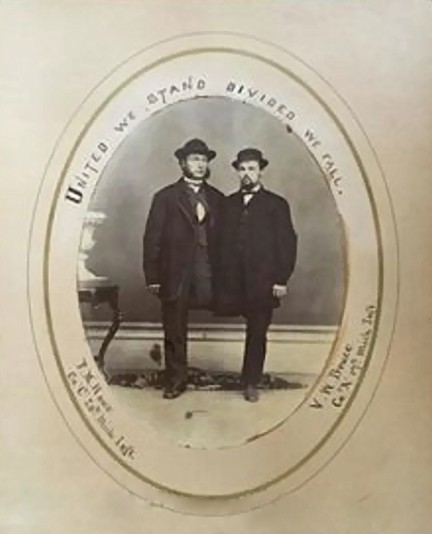In 1863, Nancy Serena Galbraith was a 44-year-old widow living on her 4,000-acre farm in the Virtue community. Life was undoubtedly hard for her as she struggled to raise eight children without the aid of her late husband, Samuel Gaston Galbraith.
Yet on Nov. 16, 1863, Mrs. Galbraith, known in the community as being a fine Christian woman, opened her home for the purposes of a makeshift hospital for 15 soldiers that were wounded in the Civil War Battle of Campbell Station. She sent her daughter, Lourinda, and a neighboring woman to travel a mile and a half to bring back bundles of straw on their backs to make beds for the men.
Of historical note, the Galbraith home was situated on Virtue Road where Little Turkey Creek tributary crossed (today where Virtue Road and Turkey Creek Road join). For that reason, military records refer to this fight as taking place at Turkey Creek.
Mrs. Galbraith’s kindness and generosity did not go unnoticed or unappreciated. One particular young Union soldier by the name of Valorus W. Bruce never forgot her acts of mercy to him and his comrades. Mr. Bruce was barely 18 years old when he joined the 17th Regiment of the Michigan Infantry in 1862. By 1863, Confederate forces overtook Bruce’s regiment at Turkey Creek and left him among 53 wounded with seven dead.
In a letter to the Atlanta Constitution dated Dec. 9, 1898, Mr. Bruce described the loss of his leg as being in a skirmish which commenced at the crossing of Turkey Creek, between Lenoir and Campbell Stations. He wrote, “As I lay there on the ground, I held up my foot and asked the first Confederate soldier who came along to pull the boot off from my wounded leg. I did so with confidence and without fear, and he did not disappoint me, but laid down his gun, pulled off my boot gently, handed it to me, picked up his gun and hurried on after more Yanks.”
Mr. Bruce related that the next day Confederate surgeons amputated his leg and Mrs. Galbraith’s two sons buried it in the back yard. He spoke that although he was a Union soldier, he was cared for in a kind and courteous manner with respect. One highlight for him was when the neighbors brought a Thanksgiving meal for the wounded which included homemade molasses candy.
This account was documented in great detail when Julia Barham, historic resources coordinator of the Farragut Museum, and the late Barbara Beeler discovered a box of old letters that had been donated to the Museum. The letters were correspondence between Mr. Bruce and Mrs. Galbraith which depicted how he continued to keep in touch with her for years after the war. He was responsible for contacting the government to ask for financial compensation to Mrs. Galbraith for her care of “the boys,” to which Mrs. Galbraith received a check in the amount of $357.
One of the letters to the Galbraith family after the passing of Mrs. Galbraith in 1884 outlines the impact that Mrs. Galbraith made on the young man’s life: “The battle anniversaries do not bring sorrow to my heart because though I suffered a grievous loss that day of my limb. I think of that day, the kindness of your Christian mother and her loyal family fills my heart, and my good fortune that day in falling into such hands, crowds out all thoughts of misfortune to me personally.”
Another of Mr. Bruce’s tent buddies, Frank M. Howe, of the 20th Regiment, Michigan Infantry, was fortunate to escape injury at the Battle of Campbell Station; however, he would later lose his leg at the Richmond-Petersburg Campaign in Southern Virginia.
Sometime around the year of 1865-1866, Privates Bruce and Howe met to renew old friendships and posed for the portrait entitled “United We Stand, Divided We Fall” which is now in possession of the Farragut Museum. The phrase was a line in a patriotic ballad in 1768 by John Dickinson and it soon became a rallying cry for the Union cause during the Civil War.
The meaning of that great line is still significant in today’s world: With unity, the nation’s strength increases. Conversely, with disunity or conflict, strength decreases. Unity brings wealth and prosperity to a nation which cannot prosper if our people are not united. Mrs. Galbraith’s grace and compassion as well as the “United We Stand” motto are still good standards for today’s living.
Postscript: Private Bruce went to his reward on Oct. 11, 1909, and is buried (minus his right leg) in Toledo, Ohio. Private Howe passed away on May 4, 1916, and is buried in Arlington National Cemetery. Mrs. Galbraith and her husband are buried in Pleasant Forest Cemetery in Farragut.
Mona Isbell Smith is a retired computer systems analyst who enjoys freelancing.

